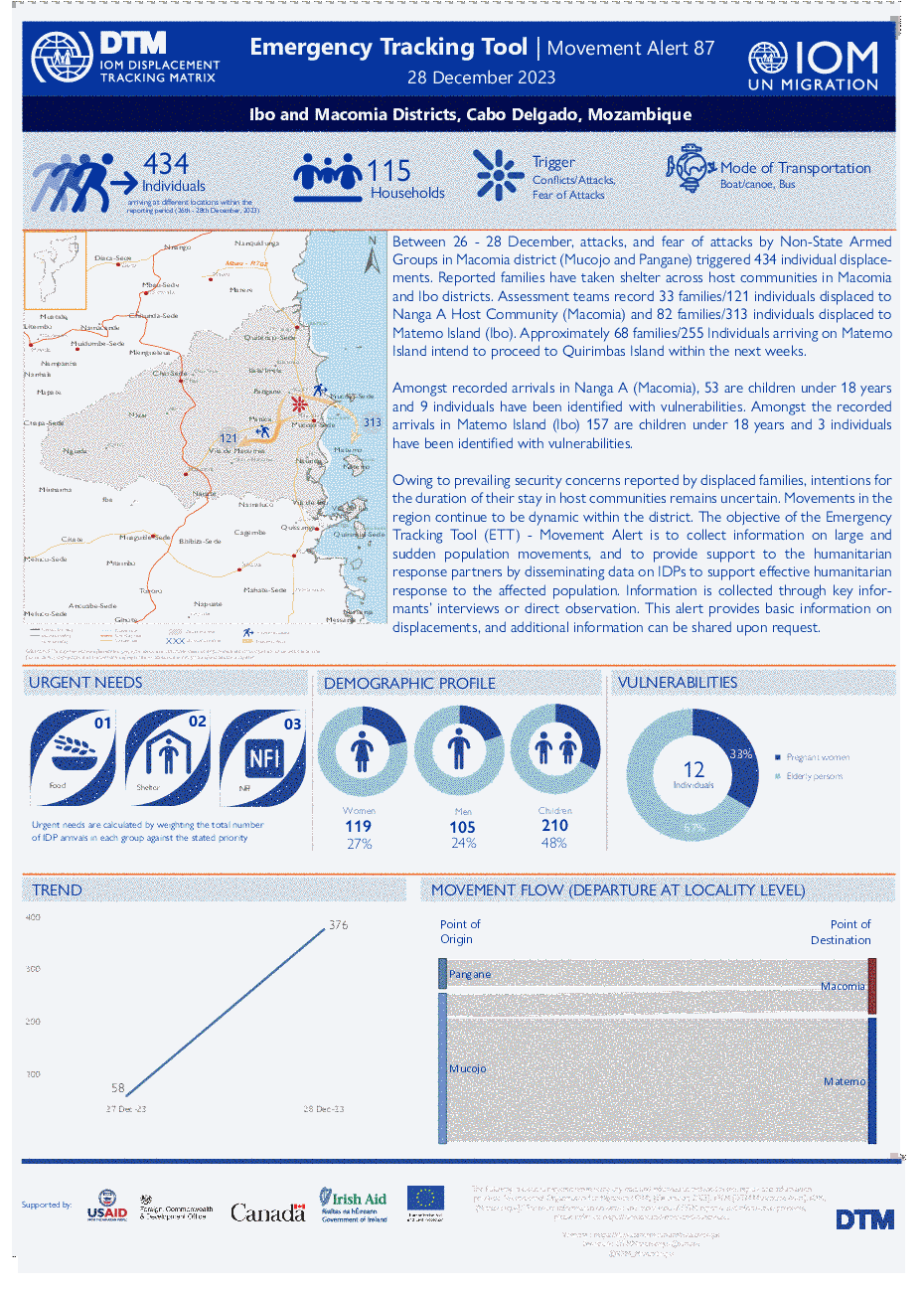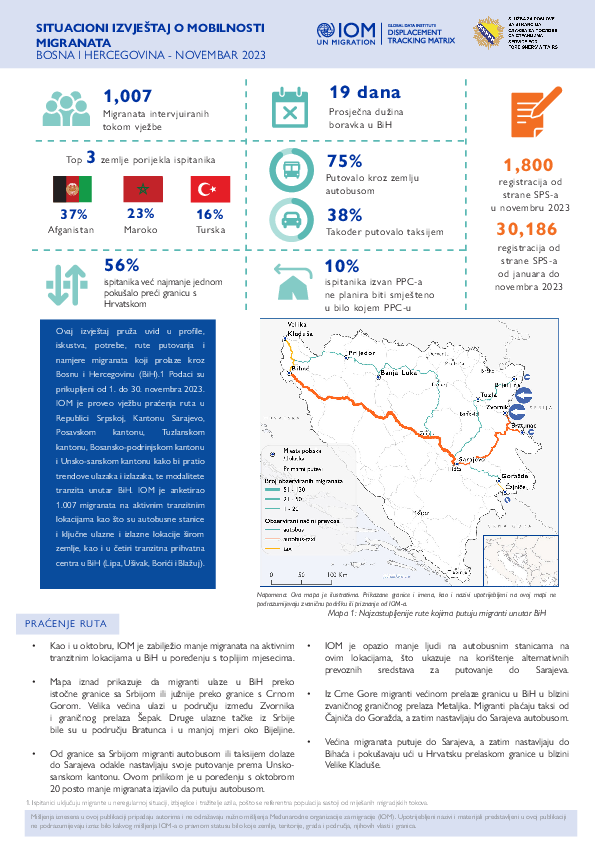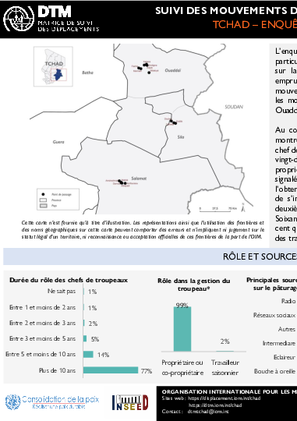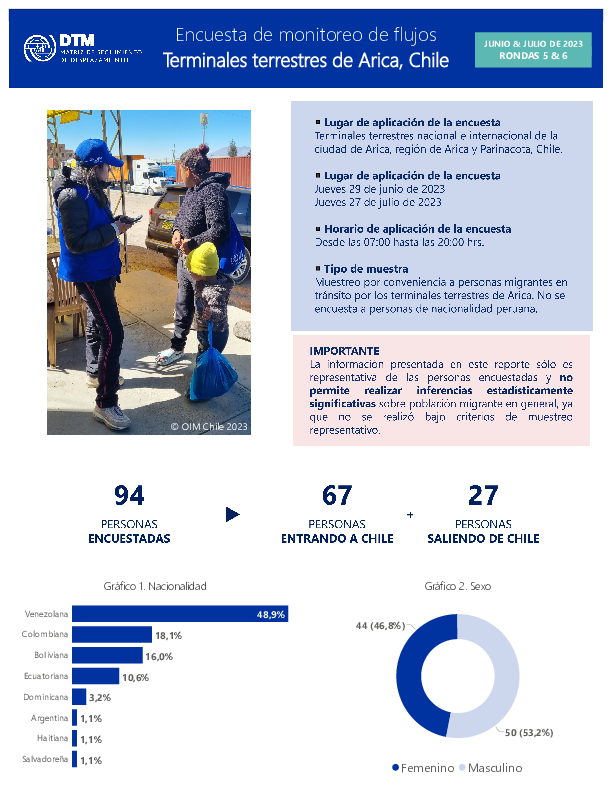-
Countries
-
Data and Analysis
-
Special Focus
-
Crisis Responses
Contact
dtmlebanon@iom.int
Location
Lebanon
Activity
- Mobility Tracking
- Baseline Assessment
Period Covered
Oct 10 2023 -Dec 19 2023
Since October 8 there has been an increase in cross-border incidents between Israel and Lebanon, resulting in the displacement of people both within the South and elsewhere within the country. Since October 10, the Displacement Tracking Matrix (DTM) has been conducting the daily monitoring of population movements. The objective of the exercise is to inform preparedness and response planning.
Population Groups
IDPs
Survey Methodology
Unit of Analysis Or Observation
Admin Area 2
Admin Area 3
Household
Individual
Type of Survey or Assessment
Key Informant
Keywords
Geographical Scope Full Coverage
Administrative boundaries with available data
The current dataset covers the following administrative boundaries

Contact
DTM Sudan, DTMSudan@iom.int
Language
English
Location
Sudan
Period Covered
Nov 28 2023
Dec 27 2023
Activity
- Mobility Tracking
- Baseline Assessment
Overview
IOM DTM Sudan presents its fourth Monthly Displacement Overview. This publication provides an account of Sudan’s displacement context since 15 April 2023 – outlining population caseloads and movements, as well the present and evolving needs of Sudan’s growing IDP caseload.
Rationale
Recognizing the need for more detailed insights into the IDP situation, including the priority needs, access to services, movement intentions, and demographic breakdowns of the affected population, DTM Sudan has undertaken a comprehensive review of our data collection tool. In collaboration with a wide range of internal and external stakeholders, we have developed a new tool to better inform humanitarian response operations, aligning with the DTM global methodology. Leveraging our extensive network of approximately 360 field-based enumerators and a robust system of over 2,317 key informants across the country, DTM has gathered data on IDPs across 6,159 locations, in 171 of Sudan’s 189 localities – across all of Sudan’s 18 states.
Key Findings
- DTM Sudan estimates that 5,856,777 Individuals (1,165,764 Households) have been recently internally displaced.
- IOM DTM also reports that an estimated 1,523,350 mixed cross-border movements have been made into neighbouring countries.
- Since 15 April 2023, 45 per cent of the IDP caseload has sought refuge in the Darfur and Kordofan regions, whereas 55 per cent were observed across the Northern, Eastern, and Central states.
- The majority of the IDP caseload (65%) were seeking shelter with the host community.
- While food security remains the highest priority need, health and non-food items are also growing concerns.

Contact
DTMMozambique@iom.int
Language
English
Location
Mozambique
Period Covered
Dec 26 2023
Dec 28 2023
Activity
- Mobility Tracking
- Event Tracking
Between 26 - 28 December, attacks, and fear of attacks by Non-State Armed Groups in Macomia district (Mucojo and Pangane) triggered 434 individual displacements. Reported families have taken shelter across host communities in Macomia and Ibo districts. Assessment teams record 33 families/121 individuals displaced to Nanga A Host Community (Macomia) and 82 families/313 individuals displaced to Matemo Island (Ibo). Approximately 68 families/255 Individuals arriving on Matemo Island intend to proceed to Quirimbas Island within the next weeks.
Amongst recorded arrivals in Nanga A (Macomia), 53 are children under 18 years and 9 individuals have been identified with vulnerabilities. Amongst the recorded arrivals in Matemo Island (Ibo) 157 are children under 18 years and 3 individuals have been identified with vulnerabilities. Owing to prevailing security concerns reported by displaced families, intentions for the duration of their stay in host communities remains uncertain. Movements in the region continue to be dynamic within the district.
The objective of the Emergency Tracking Tool (ETT) - Movement Alert is to collect information on large and sudden population movements, and to provide support to the humanitarian response partners by disseminating data on IDPs to support effective humanitarian response to the affected population. Information is collected through key informants’ interviews or direct observation. This alert provides basic information on displacements, and additional information can be shared upon request.

Contact
DTM Europe, DTMMediterranean@iom.int
Language
Bosnian, Croatian, Serbian
Location
Bosnia & Herzegovina
Period Covered
Nov 01 2023
Nov 30 2023
Activity
- Flow Monitoring
Ovaj izvještaj pruža uvid u profile, iskustva, potrebe, rute putovanja i namjere migranata koji prolaze kroz Bosnu i Hercegovinu (BiH). Podaci su prikupljeni od 1. do 30. novembra 2023. IOM je proveo vježbu praćenja ruta u Republici Srpskoj, Kantonu Sarajevo, Posavskom kantonu, Tuzlanskom kantonu, Bosansko-podrinjskom kantonu i Unsko-sanskom kantonu kako bi pratio trendove ulazaka i izlazaka, te modalitete tranzita unutar BiH. IOM je anketirao 1.007 migranata na aktivnim tranzitnim lokacijama kao što su autobusne stanice i ključne ulazne i izlazne lokacije širom zemlje, kao i u četiri tranzitna prihvatna centra u BiH (Lipa, Ušivak, Borići i Blažuj).

Contact
DTM Europe, DTMMediterranean@iom.int
Language
English
Location
Bosnia & Herzegovina
Period Covered
Nov 01 2023
Nov 30 2023
Activity
- Flow Monitoring
This report provides insights into the profiles, experiences, needs, routes travelled and intentions of migrants transiting through Bosnia and
Herzegovina (BiH).1 Data was collected from 1 November to 30 November 2023.
IOM carried out a route observation exercise in the Republika Srpska, Sarajevo Canton, Posavina Canton, Tuzla Canton, Bosnian-Podrinje Canton and Una Sana Canton to monitor trends in entries and exits as well as transit modalities within BiH. IOM also surveyed 1,007 migrants in active transit locations such as bus stops or at key entry and exit locations throughout the country as well as in four transit reception centres in BiH (Lipa, Ušivak, Borići and Blažuj).

Contact
DTM Chad, DTMTchad@iom.int
Language
English
Location
Chad
Period Covered
Nov 01 2022
Aug 31 2023
Activity
- Flow Monitoring Survey
- Flow Monitoring
L’enquête détaillée a pour but de mieux comprendre les mouvements de transhumance, particulièrement les rôles des transhumants, les sources d'information utilisées pour s'informer sur la proximité de pâturage, les raisons des mouvements des éleveurs, les itinéraires empruntés, le niveau d’éducation des transhumants, et le changement de route au cours du mouvement. Ce tableau de bord présente les principaux résultats de la collecte réalisée durant les mois de novembre, décembre 2022, mai, juin, juillet et août 2023 dans les provinces du Ouaddaï, Sila et Salamat.
Au cours de cette collecte, 950 transhumants ont été enquêtés. Les données collectées montrent que 77 pour cent des transhumants ont plus de 10 ans d'expérience dans le rôle de chef des troupeaux. Seuls 1 pour cent ont occupé ce rôle entre 1 et moins de 2 ans. Quatre-vingt-dix-neuf pour cent des transhumants ont indiqué qu’ils sont les propriétaires ou co-propriétaires dans la gestion de troupeau. Près de la moitié des personnes interrogées ont signalé que le bouche à oreille est le principal moyen utilisé comme source d’information pour l’obtention des informations sur le pâturage de proximité. Ainsi, le bouche à oreille leur permet de s’informer rapidement sur la situation pastorale, de façon sûre. L’éclaireur présente la deuxième source d’information (36%) et l’intermédiaire est indiqué en troisième lieu (19%). Soixante pour cent des transhumants n’ont suivi aucun cursus d’enseignement, contre 39 pour cent qui ont reçu une éducation coranique et 1 pour cent une éducation primaire. La plupart des transhumants sont des hommes dont la tranche d'âge est comprise entre 36 et 59 ans.

Contact
DTMAfghanistan@iom.int
Language
English
Location
Afghanistan
Period Covered
Oct 23 2023
Dec 06 2023
Activity
- Survey
- Event Tracking
In early October, four large earthquakes and their aftershocks affected the western province of Herat. Since 23 October, IOM DTM Afghanistan has conducted a household-level assessment to determine the immediate needs and conditions of the affected population. As of 6 December, IOM DTM Afghanistan has covered seven affected districts in Herat, including Gulran, Guzara, Herat, Injil, Karukh, Kushk, and Zindajan. The following key findings report focuses on data collected among:
1) New internally displaced persons (IDPs): people who have been displaced for the first time following the earthquake.
2) Secondary IDPs: people who were already displaced before the earthquake and were displaced again due to the earthquake.
While the following population groups were included in the overall assessment, they are not included in the following report:
1) Returned IDPs: people who were IDPs but have since returned to their location of origin. They are not included in the report due to their small sample size (n=24).
2) Non-IDPs: People who are no longer residing in their original compound but have remained within the limits of their village and thus are familiar with the area and have social connections to support their needs, 20,766 non-IDP households in the affected areas were assessed, however, their information is outside the scope of this report and is therefore also omitted.
The estimated number of IDPs in Herat for 2021 and 2022 was 250,000 individuals according to IOM’s Baseline Mobility Assessment Round 16, making it one of the largest IDP hosting provinces in the country. Data from IOM’s Multi-Sector Rapid Assessment shows that the districts of Zindajan and Injil were most heavily affected by the earthquake, with roughly half of the population in Zindajan and a third of the population in Injil having to leave their homes. The results of this assessment show that out of the affected, roughly five per cent are IDPs (new, secondary, or returned) while 95 per cent had to leave their original homes but remained within the limits of their village.

Contact
dtmlebanon@iom.int
Language
English
Location
Lebanon
Period Covered
Oct 10 2023
Dec 26 2023
Activity
- Mobility Tracking
- Baseline Assessment
Since October 8 there has been an increase in cross-border incidents between Israel and Lebanon, resulting in the displacement of people both within the South and elsewhere within the country. Since October 10, the Displacement Tracking Matrix (DTM) has been conducting the daily monitoring of population movements. The objective of the exercise is to inform preparedness and response planning.

Contact
iomdtmchile@iom.int
Language
English
Location
Chile
Period Covered
Aug 31 2023
Sep 28 2023
Activity
- Survey
Este informe proporciona una descripción de los flujos migratorios a través de los terminales terrestres de Arica, Chile, ciudad fronteriza con Perú, en los meses de agosto y septiembre de 2023. Se caracterizan los perfiles demográficos, incluyendo nacionalidad, género, edad y nivel educativo, de individuos en tránsito por la frontera, tanto en ruta de ingreso como de salida. Se identifican detalles sobre su ruta de viaje y las principales necesidades de asistencia humanitaria identificadas.

Contact
iomdtmchile@iom.int
Language
English
Location
Chile
Period Covered
Jun 29 2023
Jul 27 2023
Activity
- Survey
Este informe proporciona una descripción de los flujos migratorios a través de los terminales terrestres de Arica, Chile, ciudad fronteriza con Perú, en los meses de junio y julio de 2023. Se caracterizan los perfiles demográficos, incluyendo nacionalidad, género, edad y nivel educativo, de individuos en tránsito por la frontera, tanto en ruta de ingreso como de salida. Se identifican detalles sobre su ruta de viaje y principales necesidades de asistencia humanitaria.
